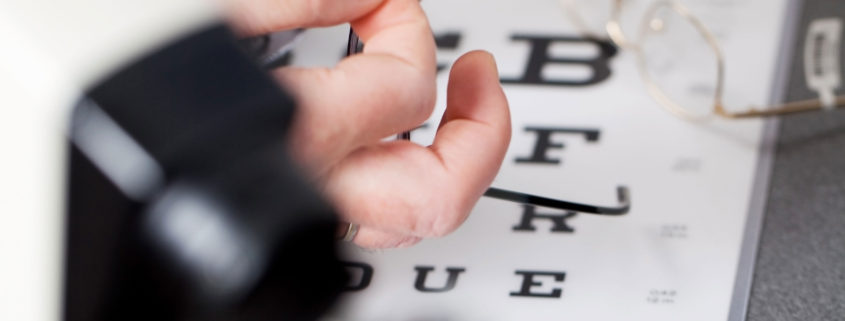Slip & Craze Prevention
Below is a procedure for edging and handling the VCD Labs premium anti-reflection coating. If you have any questions, please contact us.
- Do not clean lenses with alcohol or wipe prior to blocking. VCD Labs’ premium anti-reflection coating comes with an anti-slip layer for edging. The coating has a bluish tinge and will wipe off easily with water.
- Do not pre-pad blocks with pads too far in advance. Make certain blocks are clean and dry. Apply pad to block first, and do not touch adhesive.
- Use the anti-slip film (enclosed with uncuts) on the lens under the blocking pad on Resolution® polycarbonate, polycarbonate flat top, fairly thick and high cylinder lenses. Anti-slip film may also be used on the rear of the lens for added grip under the chuck.
- Use the correct base, solid center blocks. Front and rear chuck size and shape must match.
- Room temperature is best for lenses, blocks and water supply if running a wet edger.
- Ensure proper seating and alignment with pad press or lens block aligner removing any air space.
- Do not allow blocked lenses to sit longer than 10 minutes. Reseat lens on pad with press or block aligner to remove any areas of poor contact after longer period prior to edging.
- Check condition of blades and wheels.
- Check Edger settings and recommendations of manufacturer for various materials.
- Minimum feed rates.
- Minimum blade/wheel speeds or head pressure, especially polycarbonate.
- Standard / Fragile (for very thin) chuck pressure for all materials except Resolution® Polycarbonate. For polycarbonate, use a thick poly mode/setting.
- Twist blocks off. Be careful not to bend the lens at de-blocking, insertion or adjusting.
- Avoid the use of axis pliers and frame warmers on the lenses.
Finished Stock SV Resolution Lenses
- Clean lenses with alcohol prior to blocking Do not pre pad blocks with pads too far in advance.
- Place Anti slip pad on lens between lens and block
- Ensure proper seating and alignment with pad press or lens block aligner removing any air space.
Place additional Leap Type Pad on Back Surface, exposing the adhesive side to chuck.
- Do not allow blocked lenses to sit longer than 10 minutes. Reseat lens on pad with press or block aligner to remove any areas of poor contact on after longer period prior to edging.
- As above
Common causes of Splits in Polycarbonate lenses are created by a few issues.
1. The lens was too tight in the frame and the cracks where the barrel closes is clearly defined by the stress marks.
2. The frame and or lenses was cleaned with either alcohol or all off and there is a build up or residue of the chemical left between the frame and the lens where the chemical interacts with the polycarbonate material and initiates a crack or split from the edge of the lens.
By utilizing a process of rinsing the lenses and frames with warm, light soapy water after applying any chemicals will neutralize and eliminate any residue before mounting and dispensing. Clean, dry compressed air is super effective at minimizing this from occurring as well.
Even though the stress points may be present and detailed by the splits which occur, if there is no chemical exposure to lens, the stress marks we would most likely not be initiating any splitting.



